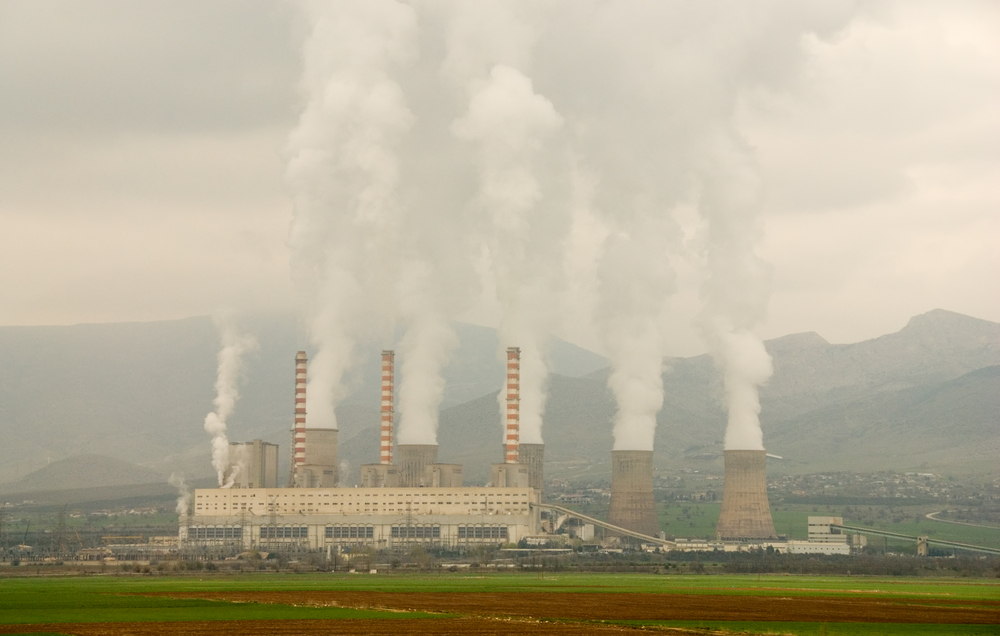Cutting Power-Plant Carbon Could Save U.S. $60 Billion by 2020 (Op-Ed)


Frances Beinecke is the president of NRDC — an environmental advocacy organization with 1.4 million supporters nationwide — served on the National Commission on the BP Deepwater Horizon Oil Spill and Offshore Drilling, and holds a leadership role in several environmental organizations. Beinecke contributed this article to Live Science's Expert Voices: Op-Ed & Insights.
This week, another group of esteemed scientists said that climate change poses a dire threat to our communities. New evidence also confirmed that one of the best tools for defusing this threat is within reach. Today, NRDC released a report showing that the United States can cut more carbon pollution from power plants, at less cost, than previously thought.
This latest analysis shows that firm limits on power-plant emissions can eliminate up to 700 million tons of carbon pollution per year in 2020. That's equivalent to taking up to 130 million cars off the road. The U.S. can also save up to $60 billion in avoided carbon pollution and medical costs in 2020. Those are major savings, and they can't come soon enough.
Power plants kick out 40 percent of the carbon pollution in our country. The United States limits mercury, arsenic and soot from power plants. And yet, amazingly, there are no national limits on how much carbon these plants can dump into our atmosphere. That's not right, and we need to fix it.
In June, the U.S. Environmental Protection Agency (EPA) will propose the first-ever carbon limits on power plants. NRDC's report shows that strong limits can save money, protect health, and stabilize the climate. We owe it to future generations to rein in this dangerous pollution.
How do we do it? NRDC's analysis shows that deep carbon cuts can be made by expanding energy efficiency , wind power and pollution-control measures. These solutions have been put to work in communities across America, confirming that many states are already on the path toward meeting the EPA's forthcoming standards.
I recently met with Governor Jerry Brown of California, and he spoke passionately about the state's enormous success with low-carbon energy. California passed a law to curb carbon pollution eight years ago, and it is now on track to generate 33 percent of its electricity from renewable resources like wind and solar. California's clean tech companies have attracted $27 billion in venture capital since 2006, and 360,000 Californians have jobs in the clean economy.
Get the world’s most fascinating discoveries delivered straight to your inbox.
Nine Northeastern states, meanwhile, have a joint program to reduce carbon pollution from power plants, and 30 states require that a percentage of electricity come from renewable sources like wind and solar. Cities are also making major progress.
Several weeks ago, I met with mayors of 10 major cities that have made a unified commitment to expand energy efficiency. Former New York City Mayor Michael Bloomberg said efficiency measures helped drive down the city's climate-change pollution by 19 percent and made the air cleaner than it's been in 50 years. Now, NRDC is helping 10 other cities adopt similar measures, and together they could cut the same amount of climate change pollution every year as taking 1.5 million cars off the road. They could also lower energy bills by nearly $1 billion annually.
Fossil-fuel companies want us to believe that clean-energy solutions are out of reach. The truth is they are right in front of us — bringing jobs, clean air and economic activity to communities across the country.
Now America can use those solutions to meet the EPA's carbon limits for power plants. And according to NRDC's latest report, the benefits will be even greater than expected.
NRDC recently updated our 2012 blueprint for reducing carbon pollution to reflect the latest trends in the electricity industry, including lower electricity demand and reduced costs for wind turbines and natural gas. We found that for a compliance cost ranging from zero to $15 billion in 2020, the United States could unleash $50 billion to $120 billion in energy efficiency and renewable investments in the next six years. The nation could also save thousands of lives and prevent 17,000 asthma attacks and other health problems in 2020 alone.
Many states have already started moving toward this cleaner, more sustainable future. Now it's time for the entire nation to get there.
Click here to tell the Obama Administration to set strong limits on carbon pollution from power plants.
Beinecke's most recent Op-Ed was "In a Warming Arctic, Oil Drilling Brings Disaster" The views expressed are those of the author and do not necessarily reflect the views of the publisher. This version of the article was originally published on Live Science.



